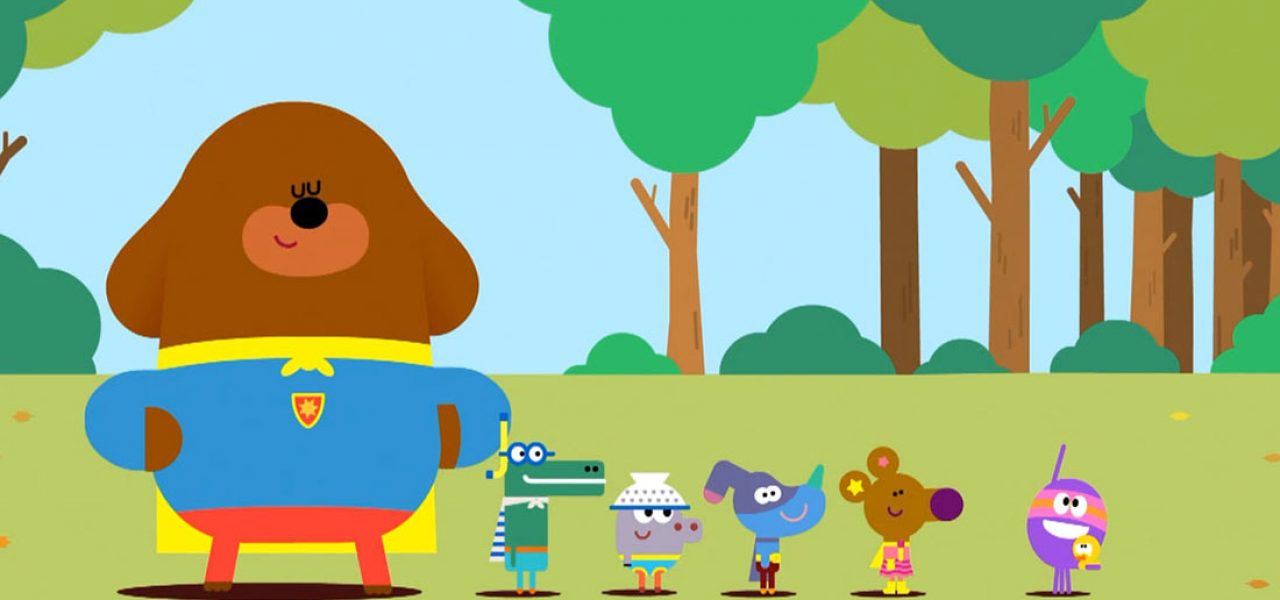
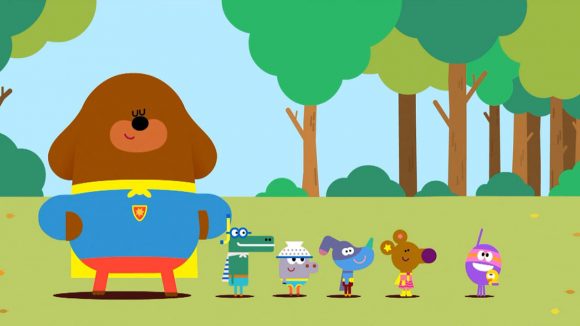
INTERVIEW: ‘Hey Duggee’ Creator Grant Orchard On Creating An Unconventional Preschool Show
British production house Studio AKA released its first preschool series Hey Duggee last year to much critical acclaim, including an International Emmy Nomination and a BAFTA win.
Currently in production on its second season, the cheerful BBC series encourages exercise and learning, with a quirky visual sensibility that delivers minimalist design and a high-energy pace.
Cartoon Brew spoke with the show’s Oscar-nominated creator Grant Orchard (A Morning Stroll) via Skype about a variety of topics, including why ‘reuse’ isn’t a dirty word, the challenges of creating a gender neutral series for preschoolers, and how being a creator sometimes compares to being a football player.
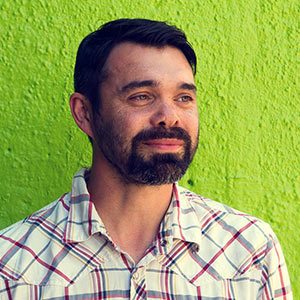
Cartoon Brew: Hey Duggee is the first series for both Studio AKA and yourself. What has the experience been like?
Grant Orchard: At first, I was a bit reluctant to do a children’s show. I mean, I like preschool, but it requires an awful lot of content; 52 episodes per season in our case. My main concern about producing that much quantity was the idea of having to make concessions to the animation. I hated that thought. But doing it has been really good fun, and I think we’ve been economical in ways that haven’t affected the quality of the animation or design.
I think the show came at a good time for me, having worked in the industry for about 20 years already. If I had made Hey Duggee 10 years ago, I wouldn’t have been able to cope with it. Doing a series, your mentality becomes slightly different. With commercials it’s like a two to four week blast, but a series — you’re doing it for a year, two years, more…
Before the show started I spoke to Ben Bocquelet and Mic Graves [creator and director respectively of The Amazing World of Gumball] for some advice. They warned me it would be the hardest thing to do, and it definitely is. It’s really time-consuming. It’s all-consuming. Hats off to anyone making a series! Anyway, I’m still here. And I’m reasonably fresh. [Laughs]
The show’s visuals and animation style feel very high quality, slick and quirky at the same time. How did you achieve this within a tv budget?
Grant Orchard: I’ve been working on commercials for nearly 20 years, and over that time I’ve enjoyed experimenting with simple shapes and minimalistic designs. For example I made a series of small films called Love Sport that used only rectangles. When we started setting up the series we were aware of the fact that if we wanted a high-end commercial standard of production for Hey Duggee, we had to make concessions in terms of design and how we were going to make it. For the character designs we started out in the same vein as I did with Love Sport—with basic geometric shapes, only this time we threw in some eyeballs and mouths.
Because we reduced the designs so much, we managed to keep our pipeline fairly slick. I’ve been working in Flash for years and I love it. I decided to use the pre-set symbols Flash offers as much as possible for design purposes. Also we decided to use no outlines and no effects outside of what Flash could do. That helped in keeping the style consistent and rendering times almost non-existent.
Another thing we decided right from the start was that ‘reuse’ isn’t a dirty word on the show. As long as a piece of animation is good, we’ll reuse it as much as possible. That will save time to make new animation as good as possible.
Lastly, I think it helps that we’ve managed to make the series on one floor of the studio. Our team consists of around 16 people in-house, and six to eight scriptwriters off-site. Everything is quite tight. There’s no phone calls to other studios explaining what we want; if there’s anything to talk about someone’s only a couple of desks away. People can see how everyone else is working and how they are doing things. We have some really talented people working on the show and they help each other out all the time. They’re a smashing bunch.
Can you tell us how you decided on the characters’ amounts of detail? Frogs for example are merely triangles.
Grant Orchard: Which character needed more detail was just a gut feeling while we were designing it and seeing the line-up together, really. Initially I always start simple, and then make additions. Duggee became the most detailed character, and so he’s definitely the biggest pain to animate. He’s the only character that has gradients, and he’s got badges and a tie. Which doesn’t sound like much, but like with a lot of graphic characters you only have to move the positions of their features slightly for them to go completely off-model. So he’s taken a long while to fine tune.
The idea for the look of the show was to keep it as simple and pared back as possible. There’s six main characters that are often together in one shot, and having any extra detail on top of that makes things quite congested and confusing for the kids watching it. We wanted to communicate our stories and ideas as clearly as possible, so we always take what we consider extraneous detail out wherever we can.
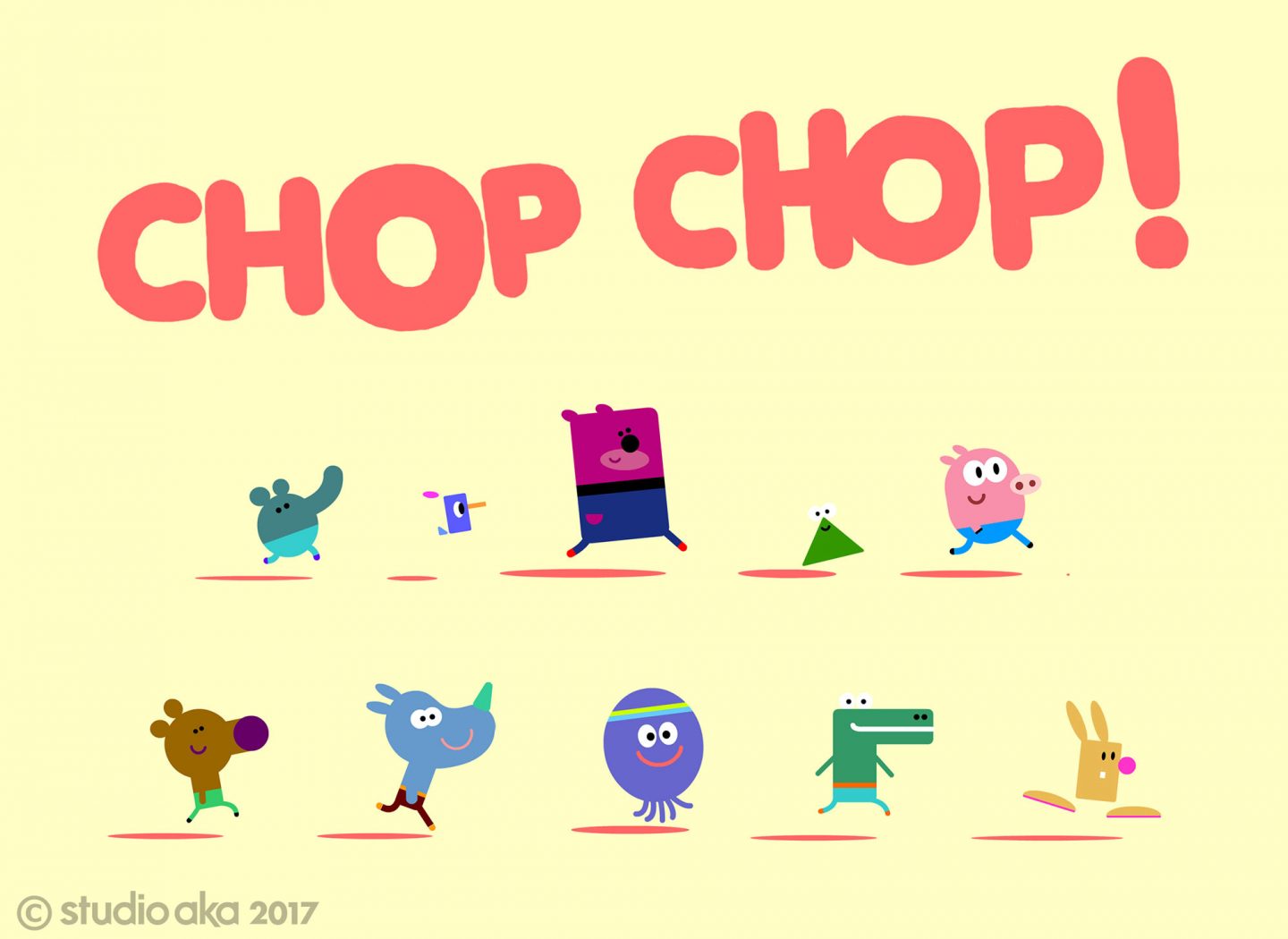
Hey Duggee emerged from Studio AKA asking you if you had any ideas for a preschool show. Did the show change a lot since the initial pitch?
Grant Orchard: Initially I didn’t have an idea, but I thought it over for a few months and then suddenly came up with the idea for Hey Duggee. When I pitched it to the studio heads I treated it quite lightly, as if it was something I thought would never happen. But everyone at the pitch was like, ‘That’s great, we love ’em,’ and then the whole train started moving. I just realize now that I could have been spending a decade’s work on just a few really simple, rushed drawings and designs that I did four years ago. Luckily the characters have developed into something that’s okay, rather than terrible. [Laughs] It seems like it worked out well. It’s a lot of luck, I think.
Why do you think it’s been luck?
Grant Orchard: It’s timing, I think. If you work on an idea or characters in a short timeframe, which we do with pitches for commercials and which I did with my Hey Duggee sketches, the quality of that work will very much depend on your mood and form. It’s like being a football player — for some inexplicable reason a player’s form will dip from time to time. Nothing clicks for them and the harder they try, the worse they seem to play. But then somehow they rediscover that form and everything’s great again. I think the same goes for designing. If your form is good during that period, you can produce things that have that quality or that has something about them. But if you haven’t got form during that period you can design things that are just terrible. Maybe with Hey Duggee I just hit upon something good at that time.
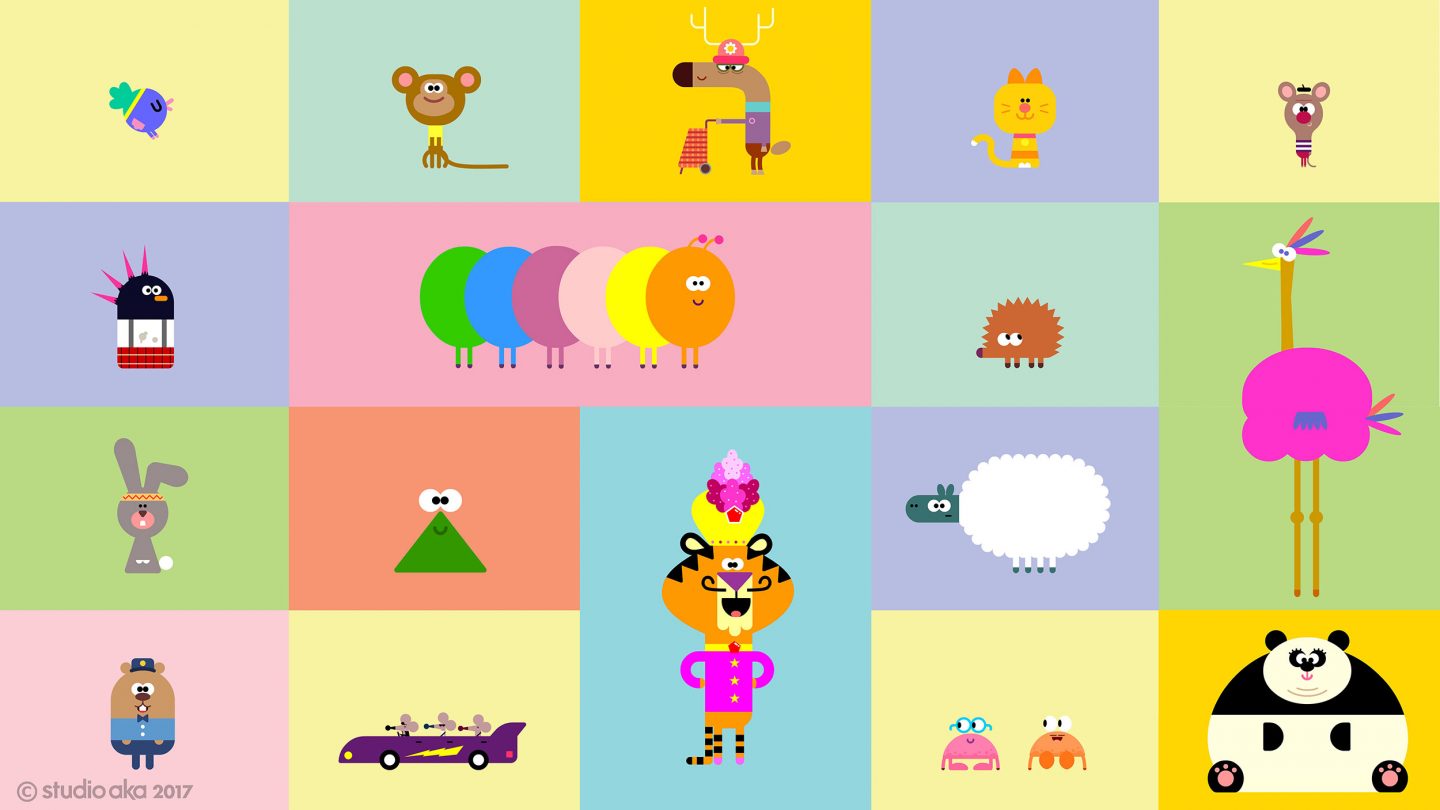
The show has a very clear story format, but at the same time each episode is fresh. How did you balance this out?
Grant Orchard: I wanted to try lots of things within the show, and the only way I thought I’d get away with having lots of varied characters and ideas was to give the general structure of the show a very traditional, familiar, clichéd kids tv feel: There’s a carer, a kind of club environment, and a few kids. Once we had that, I thought kids and parents would feel more comfortable with it, and then we could go wherever, and do whatever, and be as anarchic and weird as possible.
Do you know the phrase ‘jump the shark’? It’s when you’re running out of ideas for your show, and you do things desperately and almost randomly to keep it from going stale. Our theory was to jump the shark straight away, set a precedent right from the start that anything goes. So the storylines are fairly broad and random, but they’re all kind of held together by this very traditional preschool dynamic.
The show has a really fun and uptempo vibe. What inspired you in this?
Grant Orchard: I’ve got kids, two boys, and they’re nutsy and quite a handful. All that energy, and all the stuff that we were doing with them, I’ve tried to get in the show. That kind of high energy and sense of fun. Because I kind of like it when they’re… not mischievous, but full of energy. And I want the show to be quite ‘up’ in terms of energy. I didn’t want it to be on television just before bedtime — it just wasn’t that kind of show. I wanted kids to be watching it standing up, as close to the tv as possible.
What’s remarkable about the show is how there aren’t big differences between boys and girls, neither in design nor story.
Grant Orchard: The way we treat characters on the show, we don’t think about gender at all. We simply try to be fair in how many times each character stands out in an episode. If there’s a story about an active kid we’re not going to be like, “That’s got to be a boy,” but we think, “Let’s see, which character hasn’t had much to do recently.” So we try to be as fair as possible and not leave any of the kids in the show on the sidelines. That’s it, really.
You know, it wasn’t a conscious decision to make it a gender-neutral show. For us there wasn’t a decision to be made at all. The series’ setting is supposed to be like a class or club full of kids. They all have different personalities, like with any real group of kids. Kids’ personalities are not allocated by their sex.
Only when we started talking to distribution and marketing people about the show, and they were discussing what kind of show it was and whether it would be placed in a boys or girls aisle in supermarkets, we became determined to keep the show gender neutral as much as possible. There were some distributors who genuinely wanted to make it either a boys or girls show. I just wanted to make a show for kids. Studio AKA, who have co-funded the show, have been very diligent about protecting what the show is about.
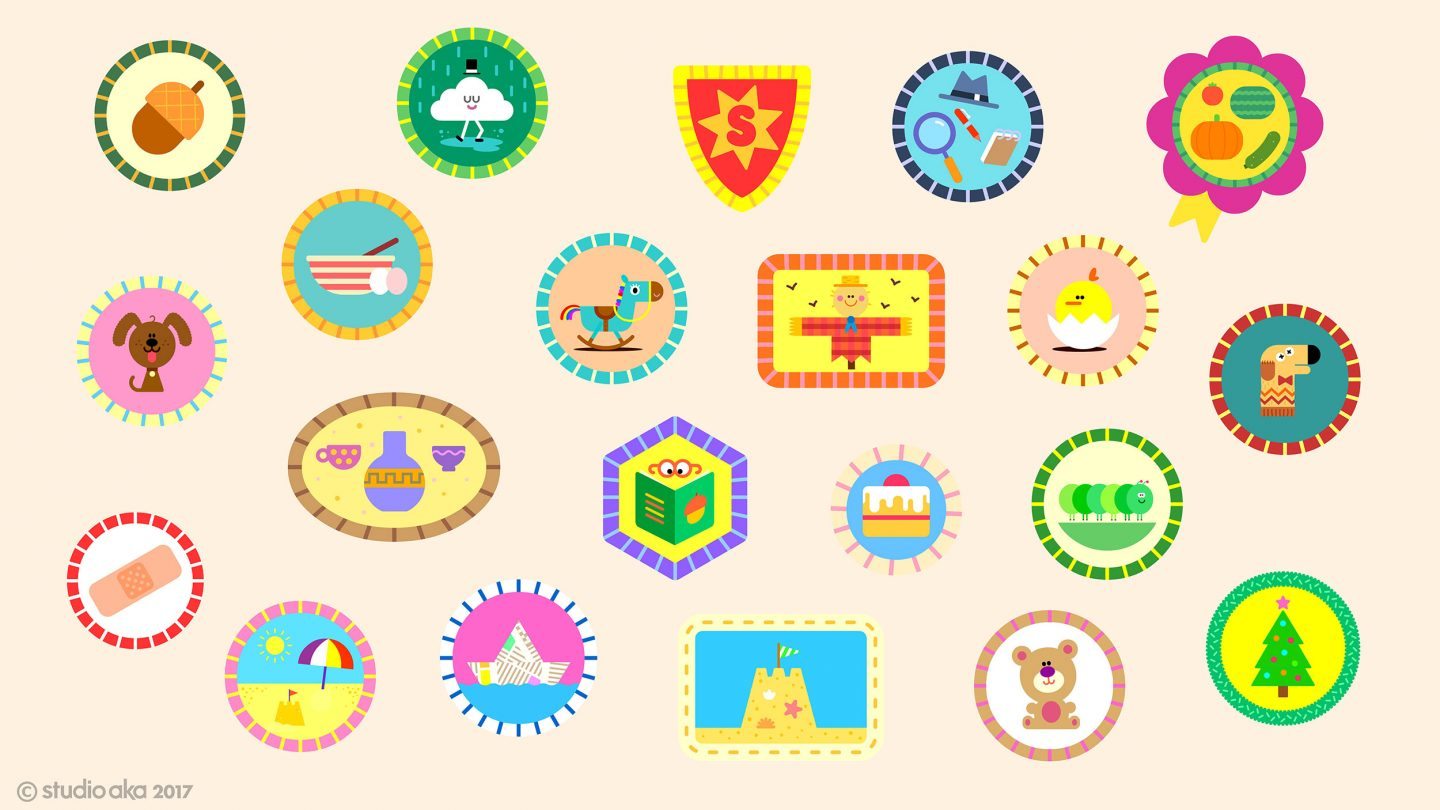
Watching the series it feels like you’ve enjoyed a great sense of freedom while making it.
Grant Orchard: Working on commercials for so long, although fun, can be quite constraining. Doing Hey Duggee is so liberating. It’s been a good platform to try things out that we’ve never done before. Generally from the marketing side of animated shows, there’s a pressure to fit in; what can be marketed for boys and what can be marketed to girls, and what the play pattern is when thinking about toys. So we decided to partner with people who were more concerned about the editorial element of the show, rather than about what it could sell. Doing that, and working with CBeebies and BBC Worldwide really protected our vision for the show.
Looking back, can you mention some things you learned during the process?
Grant Orchard: Just dealing with the amount of storylines. Scriptwriting takes a lot of time but it’s such a brilliant part of the process. What also surprised me is the amount of work that comes with the show growing. The core of the show is always the episodes, but nowadays that’s only a very small part of it, because you’ve got apps and books and clothing and toys and all those kinds of things that have to be considered. We’ve got to have quality control over everything. I never really registered that side of it until it was happening.
And yeah, just the practical things, really — the pipeline. Accessing files quickly, making sure everyone knows where things are, all of that. Suddenly I appreciate a good pipeline so much. Having a good pipeline is the best thing ever.
“Hey Duggee” airs on CBeebies in the U.K. and on Nick Jr. in the U.S.

.png)